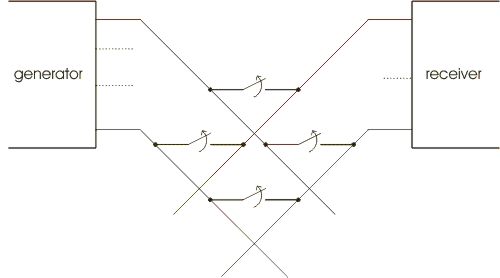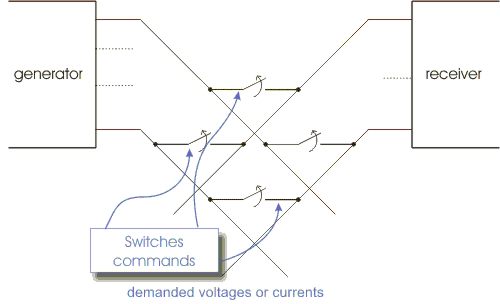In a direct converter, the semiconductor switches, join the output terminals of the generator to the input terminals of the receiver (figure 1).

According to their state (ON or OFF), these switches establish or suppress the connections between these terminals.
The voltages, the currents and the power supplied by the generator to the receiver depend on the manner in which the connections established or suppressed by the semiconductor switches evolve in time.
The commutations of the semiconductors (changes from the ON state to the OFF state or from the OFF state to the ON state) result:
according to the semiconductors' type (diode, transistor, thyristor).
If there are controlled semiconductors we can act (via the command signals that are applied to them) on the evolution of the connections between the generator and the receiver (figure 2). But we have to look after that the connections that we establishe or that we open are compatible with the Kirchhoff's laws and with the energy's continuity in the L and C elements present in the generator and the receiver.
